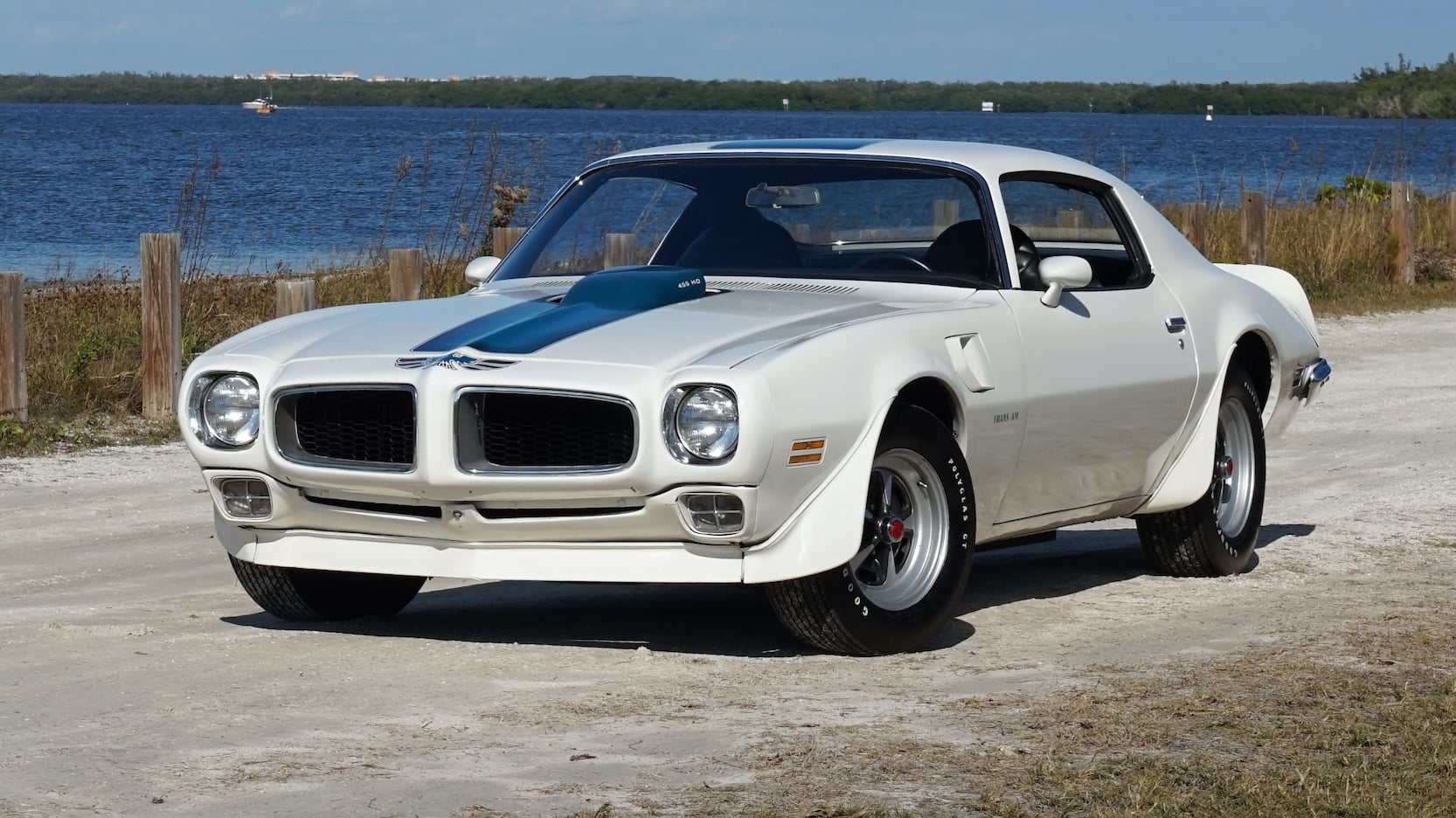Missed out on the “Bandit” Pontiac Trans Am? Try these faster alternatives
If you were a kid in the 1980s, Smokey and the Bandit was the most fun you could have with a VHS tape. And if you were an adult in 1977, the same movie inspired the most fun you could have courtesy of Detroit. At a time when Disco was awful and emissions were worse, the Bandit Trans Am gave enthusiasts hope.
Over the past several years, these Pontiacs have increased in value at an impressive rate, matching or surpassing the value of more substantial Trans Ams from earlier in the decade. Anyone can easily add horsepower to the Bandit’s constrained 400, but why not sit out Bandit Fever and consider Trans Ams that came loaded for bear from the factory?
1971–72 Trans Am

The redesigned 1970½ Firebird was a clean machine, eliciting kudos from both the public and automotive designers alike. The Trans Am? Designers thought it was a tad busy and overwrought, but all the geegaws were functional—something the competition rarely had. And handling was top notch too thanks to the suspension and aerodynamic wizardry of engineer Herb Adams.
All Trans Ams for 1970–72 were white and blue or blue and white, reflecting American racing colors. Standard power was the same Ram Air III 400 as in 1969, but now with a 10-horsepower bump (on paper) to 345; optional was the Ram Air IV, now rated identically to the GTO’s at 370 hp. Alas, in 1971, General Motors lowered the compression ratio of all its engines, but Pontiac turned the lemons into lemonade by reengineering the 455 and adding round-port heads from the 1969–70 RA IV. The result was the 455 HO, an engine that may have been rated 25 horses less than 1970’s 455 (which was never installed in the Firebird but was available for the GTO), but was faster, more flexible, and ran on unleaded to boot. Thanks to some emissions adjustments, the 455 HO lost 5 horsepower for 1972, but the difference would be unnoticeable to most, especially those who prefer the ’72’s honeycomb grille.
If you want to run 13-second ETs with classic muscle car looks, the Bandit doesn’t hold a candle to this Trans Am.
1973 Trans Am

What’s so special about the ’73 when horsepower was down overall and the Super Duty is priced out of the stratosphere? Firechicken! With a very prominent hood decal as an option, the 1973 Trans Am set the tone for the wild car that became the Bandit a few years later. “There’s nothing subtle about the Trans Am. This is the road machine for the real enthusiast. So why not show your enthusiasm with an across-the-hood Trans Am bird decal. The bird? A Firebird, of course,” read the brochure.
Additionally, the traditional white and blue color combinations were discontinued for 1973, replaced by Buccaneer Red, Cameo White, and Brewster Green, arguably giving the top Firebird a mightier look. Rated at 250 net horsepower with 8.0:1 compression, the standard 455 was more like the “regular” 455 that was available for the 1971 Formula 455, nestled between the 400 and 455 HO. And, unlike that engine, a four-speed was available (complete with standard 3.42 gears and limited-slip). The Bandit never had the luxury of a 455, giving more street cred to the ’73.
1976 Trans Am 50th Anniversary

The high-compression days were but a distant memory by now, yet by 1976 the Trans Am had gone from being a performance car with limited sales (the whole Firebird line almost got the axe) into one that carried the torch from the days of yore. In fact, 46,701 Trans Ams were built for ’76—better than the base Firebird, Esprit, or Formula, and even more than the entire Firebird series for 1972.
A wrap-around rear window was introduced the year before, the same year the 455 was dropped, then magically reappeared in March 1975 (albeit with 200 constrained horses). This engine made its final appearance for 1976, and then that was that. Still rated at 200 hp, the 455 made an encore appearance and then it was put to rest once and for all after 7099 folks bought one.
At February’s Chicago Auto Show, Pontiac introduced the Y82 50th Anniversary package for the Trans Am, which included Starlight Black paint and tons of gold trim, including gold Honeycomb wheels. Hurst Hatch T-tops were initially included with the package, but eventually the Anniversary Trans Am was available without the T-tops. Somewhat the prototype of Bandit style, the 50th Anniversary Trans Am achieved production of 2590 units, including 643 with T-tops.

